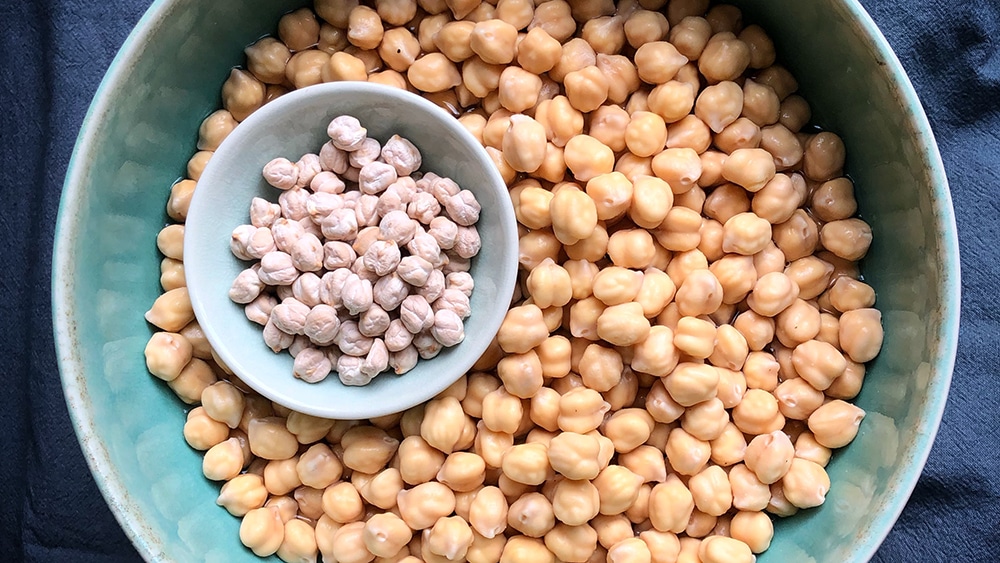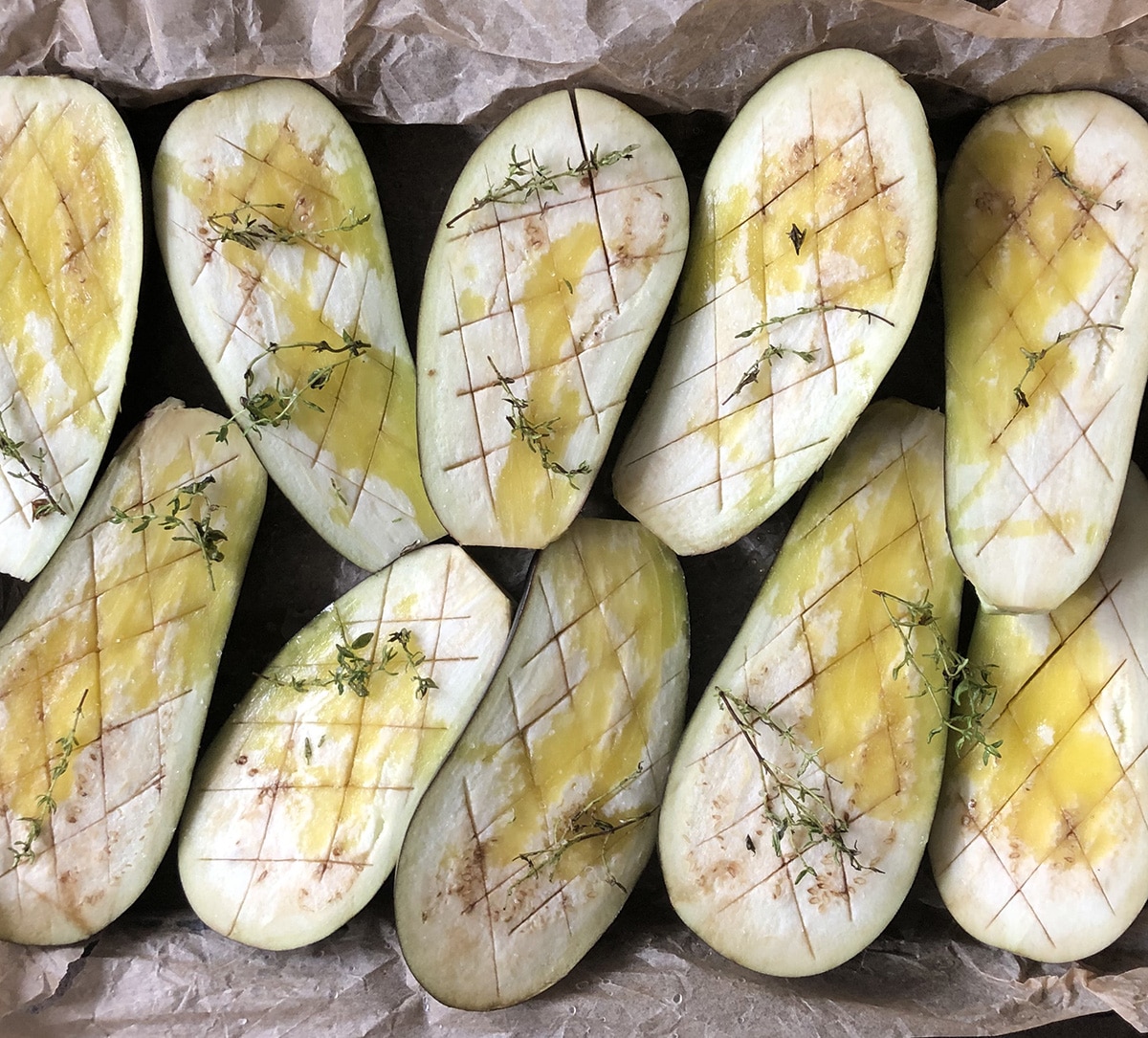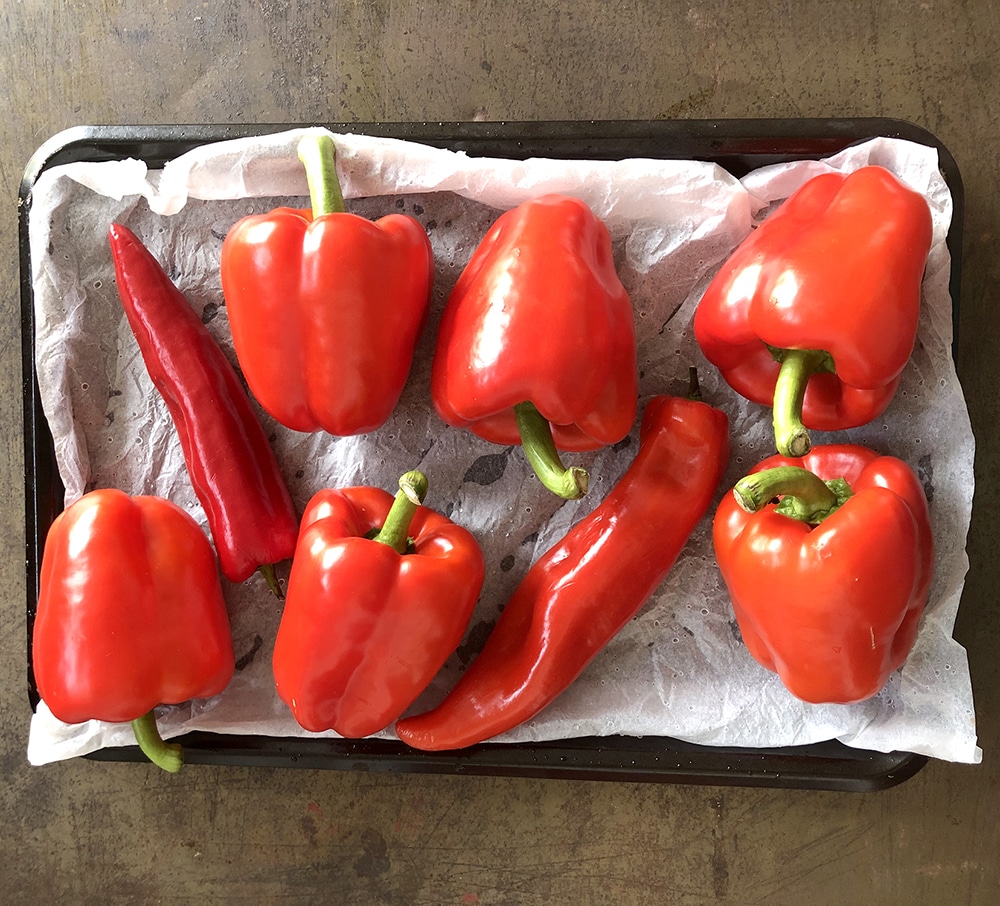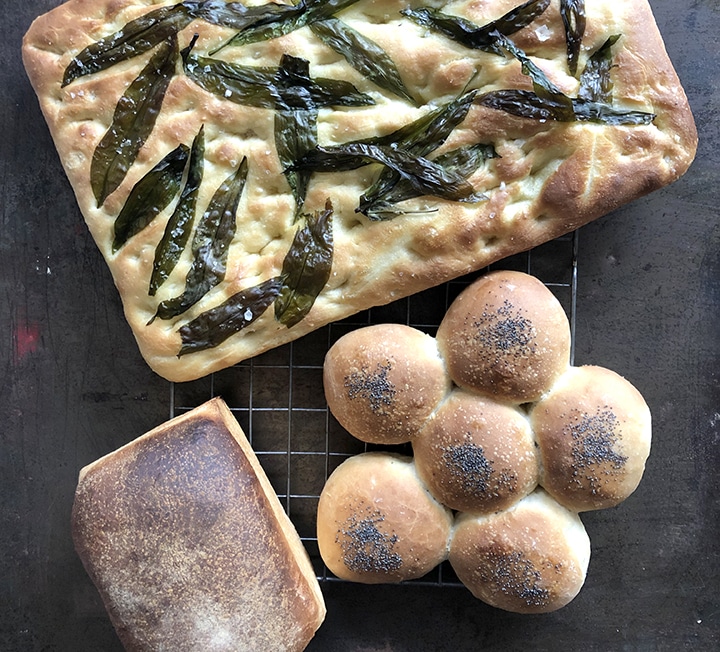Batch of the day: chickpeas
Jenny Chandler expounds on the benefits of batch cooking as a way of saving time and money, through cooking one ingredient in bulk and using it for myriad recipes. This time: chickpeas


“IF YOUR PULSES TAKE AN ABSOLUTE AGE TO COOK, THEY MAY HAVE BEEN LURKING RATHER TOO LONG IN THE CUPBOARD”
Cooking up a pot of pulses – in this case, chickpeas – is an absolute no-brainer if you’re wanting to get ahead with the building blocks for a few meals. And there’s the added bonus that any surplus pulses can be frozen in small quantities for quick fixes at a later date.
It’s a good idea to soak your chickpeas overnight if you remember: soaked pulses cook more quickly, soften more evenly and are more digestible than dried (once you’ve poured away the soaking liquid and started afresh). Don’t worry, all is not lost if you forget to soak before you go to bed – you can use the quick-soak method. Just cover the chickpeas with about 10cm water (they will eventually triple in size) and bring the pan up to the boil. Leave them to soak for 1 hour and then drain away the water.
Once ready to cook, pour the chickpeas into a large pan with some fresh water – I like to cover them by just about 5cm liquid at this stage so that the cooking stock is not too diluted, as I may use this starchy liquid (known as aquafaba) in another recipe. More on that later. Bring the pot up to the boil, cover, and then simmer for anything between 45 mins to 1 hour until cooked through, topping up with water if necessary, to keep the chickpeas submerged.
When preparing chickpeas specifically for hummus it’s worth continuing until their texture becomes really soft and creamy, if you want a silky-smooth result, but generally I prefer a slightly nutty bite. If your pulses take an absolute age to cook, they may have been lurking rather too long in the cupboard, but they will eventually soften up – just be patient. Adding half a teaspoon of baking soda is an option if your water is especially hard (it’s loaded with minerals such as magnesium and calcium, which strengthen the cell walls and hinder moisture absorption).
I tend to salt my chickpeas once cooked. It’s not that the salt will toughen your beans, that notion has been disproven, but I do sometimes use pulses in deserts and have no need for salt at all. Store the chickpeas in their own stock in a large pot in the fridge and use within five days.
How to use your cooked chickpeas
— Roast vegetables such as carrot, aubergine, red peppers, onions and potatoes with cumin, coriander and cinnamon, then add a spicy tomato sauce and chickpeas for the classic Turkish dish turlu turlu.
— Whizz up a simple hummus with garlic, extra virgin olive oil, tahini, lemon juice and seasoning. Jazz up the hummus by blitzing in roasted veg such as carrot, parsnip or beetroot, or inject some green with handfuls of fresh herbs.
— Add them to a bowl of long pasta such as linguine with plenty of extra virgin olive oil, lemon juice and zest, parsley, parmesan and black pepper.
— Fry chorizo with onion and then add a can of tomatoes and plenty of chickpeas for a super-quick supper. You could add spinach at the last minute, or even crack in a couple of eggs to poach/ steam in the pan with the lid on.
— A ladle of chickpeas will make any salad more substantial – perfect for lunch boxes.
— How about going Indian with a traditional chana chaat?
— Do try whisking up the aquafaba (the cooking water). You may have to boil the stock to reduce it down to a thick, gloopy, egg white consistency, but I usually find that it thickens up beautifully as the chickpeas sit in it in the fridge. The starchy stock will beat up to a frothy foam (admittedly it takes some serious beating – I’d definitely be thinking electric) which can be used as an egg replacer in meringues, cakes and even yorkshire pudding.
See Jenny’s recipe for chana chaat.


